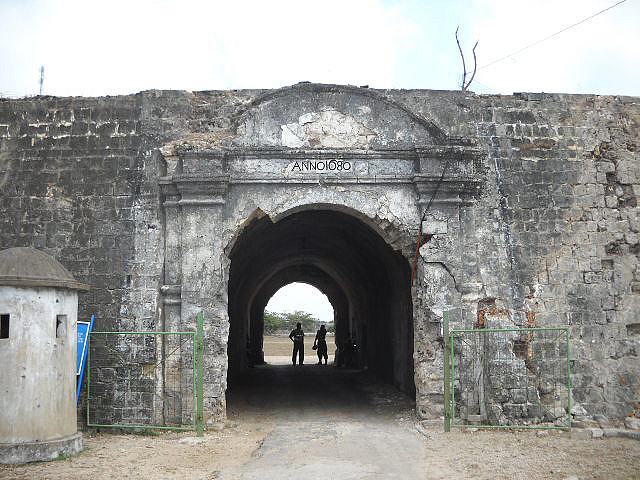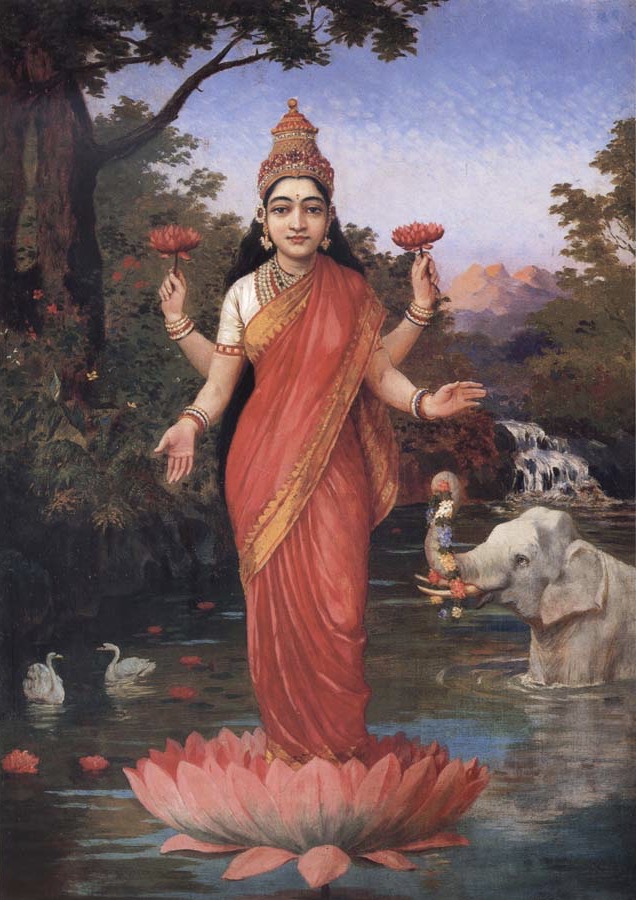|
Charles Wijewardhana
Charles Wijewardhana (5 April 1948 – 4 August 2005) was a Sri Lankan police officer and rugby player. He was serving as the Superintendent of Police (SP), Jaffna when he was kidnapped and killed by a mob at Inuvil, Jaffna. Career Educated at Vidyartha College, Wijewardhana started playing for the school rugby team in 1965. Following his schooling, he joined the Royal Ceylon Air Force in 1968 and captained the Air Force Sports Club in 1972. He then joined the Sri Lanka Police as a Sub-inspector on 6 August 1972 and captained the Police Sports Club in 1979 winning the Clifford Cup. He had played for the Kandy Sports Club, the CH & FC and the national team. He then served as a rugby referee, and as the official secretary of the Referees Society in 1989 and 1990. Wijewardhana had served as Assistant Superintendent of Police in Kurunegala for five years before his promotion to the rank of Superintendent and a year later was posted to Jaffna. Death Wijewardhana was serving as S ... [...More Info...] [...Related Items...] OR: [Wikipedia] [Google] [Baidu] |
Jaffna
Jaffna (, ; , ) is the capital city of the Northern Province, Sri Lanka, Northern Province of Sri Lanka. It is the administrative headquarters of the Jaffna District located on a Jaffna Peninsula, peninsula of the same name. With a population of 88,138 in 2012, Jaffna is Sri Lanka's 12th List of cities in Sri Lanka, most populous city. Jaffna is approximately from Kandarodai which served as an Marketplace, emporium in the Jaffna peninsula from classical antiquity. Jaffna's suburb Nallur, Jaffna, Nallur served as the capital of the four-century-long medieval Tamil Jaffna Kingdom. Prior to the Sri Lankan civil war, Sri Lankan Civil War, it was Sri Lanka's second most populous city after Colombo. The 1980s insurgent uprising led to extensive damage, expulsion of part of the population, and military occupation. Since the end of civil war in 2009, refugees and internally displaced people began returning to homes, while government and private sector reconstruction started taking plac ... [...More Info...] [...Related Items...] OR: [Wikipedia] [Google] [Baidu] |
Service Rifle
A service rifle (or standard-issue rifle) is a rifle a military issues to its regular infantry. In modern militaries, this is generally a versatile, rugged, and reliable assault rifle or battle rifle, suitable for use in nearly all environments and is effective in most combat situations. Almost all modern militaries are issued service pistols as sidearms to accompany their service rifles. The term can also be used to describe weapons issued by non-military forces, such as law enforcement or paramilitaries. If the issued weapon is not a rifle or carbine, but instead a different type of firearm intended to serve in a specialized role such as a combat shotgun, submachine gun, or light machine gun, it is called a service firearm or service weapon. History Firearms with rifled barrels existed long before the 19th century, but were not widely used until the mid-19th century in conflicts such as the Crimean War and American Civil War. Thus, rifles in the early 19th century were ... [...More Info...] [...Related Items...] OR: [Wikipedia] [Google] [Baidu] |
Sri Lankan Police Officers Killed In The Line Of Duty
Shri (; , ) is a Sanskrit term denoting resplendence, wealth and prosperity, primarily used as an honorific. The word is widely used in South and Southeast Asian languages such as Assamese, Meitei ( Manipuri), Marathi, Malay (including Indonesian and Malaysian), Javanese, Balinese, Sundanese, Sinhalese, Thai, Tamil, Telugu, Odia, Assamese, Punjabi, Hindi, Bengali, Nepali, Malayalam, Kannada, Sanskrit, Pali, Khmer, and also among Philippine languages. It is usually transliterated as ''Sri'', ''Sree'', ''Shri'', ''Shiri'', ''Shree'', ''Si'', or ''Seri'' based on the local convention for transliteration. In Tamil it evolved to Tiru. The term is used in Indian subcontinent and Southeast Asia as a polite form of address equivalent to the English "Mr." in written and spoken language. "Shri" is also used as a title of veneration for deities or as honorific title for individuals. "Shri" is also an epithet for Hindu goddess Lakshmi, while a ''yantra'' or a mystical diagra ... [...More Info...] [...Related Items...] OR: [Wikipedia] [Google] [Baidu] |
Sri Lankan Rugby Union Players
Shri (; , ) is a Sanskrit term denoting resplendence, wealth and prosperity, primarily used as an honorific. The word is widely used in South and Southeast Asian languages such as Assamese, Meitei ( Manipuri), Marathi, Malay (including Indonesian and Malaysian), Javanese, Balinese, Sundanese, Sinhalese, Thai, Tamil, Telugu, Odia, Assamese, Punjabi, Hindi, Bengali, Nepali, Malayalam, Kannada, Sanskrit, Pali, Khmer, and also among Philippine languages. It is usually transliterated as ''Sri'', ''Sree'', ''Shri'', ''Shiri'', ''Shree'', ''Si'', or ''Seri'' based on the local convention for transliteration. In Tamil it evolved to Tiru. The term is used in Indian subcontinent and Southeast Asia as a polite form of address equivalent to the English "Mr." in written and spoken language. "Shri" is also used as a title of veneration for deities or as honorific title for individuals. "Shri" is also an epithet for Hindu goddess Lakshmi, while a '' yantra'' or a myst ... [...More Info...] [...Related Items...] OR: [Wikipedia] [Google] [Baidu] |
Sri Lankan Air Force Airmen
Shri (; , ) is a Sanskrit term denoting resplendence, wealth and prosperity, primarily used as an honorific. The word is widely used in South and Southeast Asian languages such as Assamese, Meitei ( Manipuri), Marathi, Malay (including Indonesian and Malaysian), Javanese, Balinese, Sundanese, Sinhalese, Thai, Tamil, Telugu, Odia, Assamese, Punjabi, Hindi, Bengali, Nepali, Malayalam, Kannada, Sanskrit, Pali, Khmer, and also among Philippine languages. It is usually transliterated as ''Sri'', ''Sree'', ''Shri'', ''Shiri'', ''Shree'', ''Si'', or ''Seri'' based on the local convention for transliteration. In Tamil it evolved to Tiru. The term is used in Indian subcontinent and Southeast Asia as a polite form of address equivalent to the English "Mr." in written and spoken language. "Shri" is also used as a title of veneration for deities or as honorific title for individuals. "Shri" is also an epithet for Hindu goddess Lakshmi, while a ''yantra'' or a mystical diagra ... [...More Info...] [...Related Items...] OR: [Wikipedia] [Google] [Baidu] |
Sinhalese People
The Sinhalese people (), also known as the Sinhalese or Sinhala people, are an Indo-Aryan peoples, Indo-Aryan ethno-linguistic group native to the island of Sri Lanka. They are the largest ethnic group in Sri Lanka, constituting about 75% of the Sri Lankan population and number more than 15.2 million. The Sinhalese people speak Sinhala language, Sinhala, an insular Indo-Aryan languages, Indo-Aryan language. Sinhalese people are predominantly Theravada Buddhists, although a significant minority of Sinhalese follow branches of Christianity in Sri Lanka, Christianity and Religion in Sri Lanka, other religions. Since 1815, Sinhalese people were broadly divided into two subgroups: the up-country Sinhalese of the Central province, Sri Lanka, central mountainous regions, and the low-country Sinhalese of the coastal regions. Although both groups speak the same language, they are distinguished as they observe different cultural customs. According to the ''Mahavamsa'', a Pali chronicle ... [...More Info...] [...Related Items...] OR: [Wikipedia] [Google] [Baidu] |
2005 Deaths
This is a list of lists of deaths of notable people, organized by year. New deaths articles are added to their respective month (e.g., Deaths in ) and then linked below. 2025 2024 2023 2022 2021 2020 2019 2018 2017 2016 2015 2014 2013 2012 2011 2010 2009 2008 2007 2006 2005 2004 2003 2002 2001 2000 1999 1998 1997 1996 1995 1994 1993 1992 1991 1990 1989 1988 1987 1986 Earlier years ''Deaths in years earlier than this can usually be found in the main articles of the years.'' See also * Lists of deaths by day * Deaths by year (category) {{DEFAULTSORT:deaths by year ... [...More Info...] [...Related Items...] OR: [Wikipedia] [Google] [Baidu] |
1948 Births
Events January * January 1 ** The General Agreement on Tariffs and Trade (GATT) is inaugurated. ** The current Constitutions of Constitution of Italy, Italy and of Constitution of New Jersey, New Jersey (both later subject to amendment) go into effect. ** The railways of Britain are nationalized, to form British Railways. * January 4 – British rule in Burma, Burma gains its independence from the United Kingdom, becoming an independent republic, named the 'Post-independence Burma (1948–1962), Union of Burma', with Sao Shwe Thaik as its first President and U Nu its first Prime Minister. * January 5 – In the United States: ** Warner Brothers shows the first color newsreel (''Tournament of Roses Parade'' and the ''Rose Bowl Game''). ** The first Kinsey Reports, Kinsey Report, ''Sexual Behavior in the Human Male'', is published. * January 7 – Mantell UFO incident: Kentucky Air National Guard pilot Thomas Mantell crashes while in pursuit of an unidentified fl ... [...More Info...] [...Related Items...] OR: [Wikipedia] [Google] [Baidu] |
Attorney General's Department (Sri Lanka)
The Attorney General's Department is a non-ministerial government department in Sri Lanka that supports the attorney general and his/her deputy the solicitor general. The department is headed by the attorney general and comes under the purview of the Ministry of Justice. The office of "Attorney General" was formally adopted in the year 1884. Operational functions Attorney General's Department provides legal assistance to the Central Government, Provincial Councils, Government Departments, Statutory Boards and other Semi Government institutions. Legal officers of the Department provide instructions to the Government and Governmental Institutions on Civil, Criminal, Constitutional and Commercial matters and represent the Government and Governmental Institutions for the Cases, instituted in the Supreme Court, other Courts and labor tribunals in the Island. Organisation Three main Divisions named Civil Division, Criminal Division and State Attorney Division have been established in ... [...More Info...] [...Related Items...] OR: [Wikipedia] [Google] [Baidu] |
Criminal Investigation Department (Sri Lanka)
The Criminal Investigation Department (known as CID) of the Sri Lanka Police Service is responsible for carrying out investigations throughout the island into serious crimes, including murders, rape and organized crime cases of a very serious nature that require special skills and complex detection. At times, the CID carries out investigations pertaining to national security. It is the premier investigation arm of the Sri Lanka Police Department and was established in 1870. It is headed by a director, who was of a Senior Superintendent of Police (SSP) Grade. However, since the late 1970s, the position of Deputy Inspector General of Police - CID (DIG/CID) was established. The CID was modeled after the British Police Criminal Investigation Department The Criminal Investigation Department (CID) is the branch of a police force to which most plainclothes criminal investigation, detectives belong in the United Kingdom and many Commonwealth of Nations, Commonwealth nations. A f ... [...More Info...] [...Related Items...] OR: [Wikipedia] [Google] [Baidu] |
LTTE
The Liberation Tigers of Tamil Eelam (LTTE; , ; also known as the Tamil Tigers) was a Tamil militant organization, that was based in the northern and eastern Sri Lanka. The LTTE fought to create an independent Tamil state called Tamil Eelam in the northeast of the island in response to violent persecution and discriminatory policies against Sri Lankan Tamils by the Sinhalese-dominated Sri Lankan Government. The leader of the LTTE, Velupillai Prabhakaran, cited the 1958 anti-Tamil pogrom as one of the factors that led him to militancy. In 1975, he assassinated the Mayor of Jaffna, Alfred Duraiappah, in revenge for the 1974 Tamil conference incident. The LTTE was subsequently founded in 1976 as a reaction to the Sri Lankan Constitution of 1972 which prescribed Buddhism as the primary religion of the country, and Sinhala as its national language. The LTTE was involved in attacks on government targets, policemen and local politicians and moved on to armed clashes against ... [...More Info...] [...Related Items...] OR: [Wikipedia] [Google] [Baidu] |




